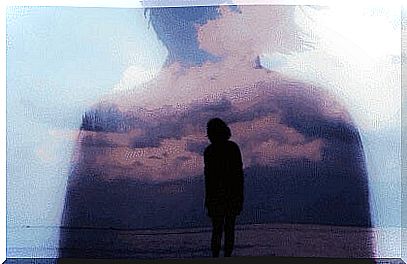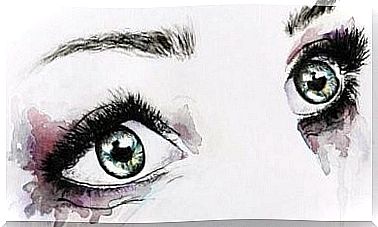The Language Of Depression: When Depression Gets A Voice

The language of depression has a voice, and it changes you. Anxiety, apathy and desperation seep into the words you choose. It even affects your speech pattern. Everything is shorter, darker and motivated by a deep bitterness that distorts reality.
Depression manifests itself in your life in many different ways. Still, the worst trick is that it deforms everything. It changes your behavior, motivation, habits, thoughts and language. Sometimes, instead of reacting to depression, people end up assimilating their dark presence as yet another part of who they are.
We say this for a very specific reason. Some try to normalize these helpless states of mind. Depressed men and women are barely able to fulfill their obligations and responsibilities, but no one notices the shadow that accompanies them. In this connection, we now have new technology that uses social media to identify linguistic patterns related to depression. The results reflect the high levels of depression that exist in our society.
The University of Texas conducted a study to detect signs of depression in human interaction on social networks and Internet forums. Our teens, for example, tend to use these platforms to ventilate and communicate. It is alarming to come across these clear signs of mental illness in people who so often do not receive treatment. Why not? Because no one has identified their disorder yet.
Remember that depression gives a mark. There are clues that show depression in the way you communicate. Let’s dive a little deeper into the language of depression.

How can we identify the language of depression?
The language of depression is part of our culture. While this may surprise you, it is a fact. There are many songs that reflect a musician’s emotional state in a dark and complex life stage. Artists such as Kurt Cobain and Amy Winehouse are good examples of this genre. We love their lyrics because we love sad songs and stories.
We see several examples of this in theater, literature, film and poetry. Silvia Plath, a famous poet, said: “Dying is an art, like everything else. I’m doing exceptionally well. ” Virginia Woolf left many obvious and sometimes brutal clues in many of her books, such as The Waves and Mrs. Dalloway .
In some cases, these mental disorders lead to creative genius (as in the examples above). It’s almost like an agreement with the devil because success, recognition and creative mastery often take up the artist’s life. You can often see it coming. Their work is peppered with clues about their impending, desperate and sad end. After all, the language of depression is bitter and has patterns that are easy to see. They are mirrors that reflect the restless inner life of their owner.
Let us learn to identify the language of depression.
Content and language style
At the beginning of last year, Clinical Psychological Science shared a way to detect depression through language. We are not just talking about oral communication, either. As we mentioned at the beginning, we now have the technology to identify certain disorders through social media.
- The first aspect of the language of depression that stands out is the content. Negative emotions dominate, of course. Desperation, fatalistic ideas and words like “loneliness”, “sadness” and “fear” are common.
- Absolutist expressions abound in the language of depression. People write things like “There is no solution”, “I have no hope”, “Tomorrow does not exist”, “I am always alone”, or “No one understands me”.
It is important to mention that experts relate such expressions to people who have suicidal thoughts.

Use of pronouns
Another feature of this type of language is the almost exclusive use of the pronoun “I”. The world of a depressed mind becomes small, reductive and oppressive. Within this disorder, only one person resides. This “I” can no longer connect with other people and can not see things from other perspectives. They have lost the ability to feel empathy, relativize or open up to other more optimistic ideas.
The constant use of first person is another manifestation of the negative emotions that become overwhelming.
The rumination cycle
Language is a reflection of your thoughts and mood. So when depression reigns, you end up with a rumination on your obsessions. This persistent habit is like stagnant water. Nothing new comes in, just the same old information moving around and gnawing until it makes you sick.
This is why you often hear a person with depression, bring up the same topics over and over again. They are stuck in certain conversations, negative ideas, doubts and obsessions. Asking them to stop or change the subject is useless. They simply can not do it.

The useful thing about understanding the language of depression is that you can pick up the first clues from those around you and try to intervene. This is relevant to so many of us, especially those of us who have children and teens.
Some credit certain behaviors and communication styles to a normal rebellious teenage phase. However, these dynamics and expressions do not reflect a personality type. Instead, they are often a sign of a psychological disorder. Depression is becoming more common every day. Therefore, it is important to know the best way to respond so that you can try to prevent it.









